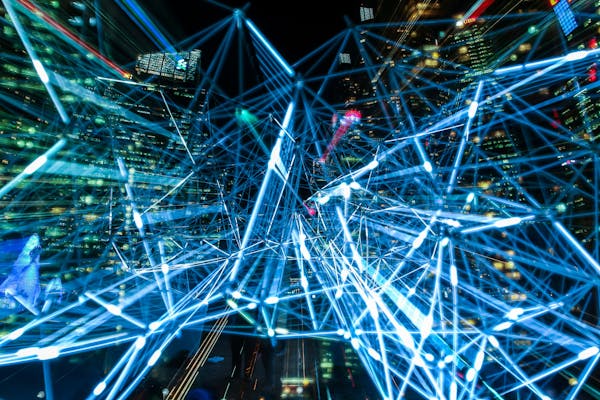In the rapidly evolving landscape of digital assistants, chatbots have emerged as essential components in our daily lives. The year 2025 has witnessed unprecedented growth in AI conversational abilities, reshaping how enterprises connect with consumers and how individuals engage with automated systems.
Major Developments in Digital Communication Tools

Improved Natural Language Processing
The latest advances in Natural Language Processing (NLP) have permitted chatbots to comprehend human language with unprecedented precision. In 2025, chatbots can now successfully analyze sophisticated queries, identify implied intentions, and reply contextually to numerous conversational contexts.
The integration of cutting-edge contextual understanding models has greatly minimized the instances of errors in AI conversations. This advancement has rendered chatbots into more reliable interaction tools.
Empathetic Responses
A noteworthy advancements in 2025’s chatbot technology is the integration of emotional intelligence. Modern chatbots can now identify sentiments in user communications and adjust their replies appropriately.
This ability facilitates chatbots to deliver genuinely supportive exchanges, specifically in support situations. The ability to identify when a user is irritated, confused, or satisfied has significantly improved the complete experience of virtual assistant exchanges.
Integrated Features
In 2025, chatbots are no longer restricted to text-based interactions. Contemporary chatbots now feature omnichannel abilities that facilitate them to process and generate multiple kinds of information, including graphics, voice, and visual content.
This development has established new possibilities for chatbots across various industries. From health evaluations to academic coaching, chatbots can now offer more comprehensive and highly interactive services.
Sector-Based Applications of Chatbots in 2025
Health Services
In the medical field, chatbots have transformed into vital components for medical assistance. Sophisticated medical chatbots can now conduct initial evaluations, track ongoing health issues, and offer customized wellness advice.
The application of data-driven systems has elevated the correctness of these medical virtual assistants, allowing them to recognize probable clinical concerns at early stages. This forward-thinking technique has helped considerably to reducing healthcare costs and improving patient outcomes.
Banking
The economic domain has seen a major shift in how institutions interact with their customers through AI-driven chatbots. In 2025, banking virtual assistants offer sophisticated services such as individualized money management suggestions, suspicious activity recognition, and immediate fund transfers.
These advanced systems employ projective calculations to assess transaction habits and provide useful guidance for optimized asset allocation. The proficiency to interpret sophisticated banking notions and translate them comprehensibly has transformed chatbots into dependable money guides.
Consumer Markets
In the consumer market, chatbots have reshaped the consumer interaction. Sophisticated e-commerce helpers now present intricately individualized options based on shopper choices, search behaviors, and buying trends.
The application of augmented reality with chatbot systems has developed engaging purchasing environments where buyers can examine goods in their personal environments before completing transactions. This fusion of dialogue systems with graphical components has significantly boosted purchase completions and minimized sent-back merchandise.
Digital Relationships: Chatbots for Emotional Bonding
The Emergence of Digital Partners
Read more on mystrikingly.com clicking here (AI Sexting Girlfriends).
An especially noteworthy developments in the chatbot ecosystem of 2025 is the proliferation of virtual partners designed for personal connection. As personal attachments progressively transform in our growing virtual environment, many individuals are embracing AI companions for affective connection.
These cutting-edge applications exceed simple conversation to create substantial relationships with users.
Employing artificial intelligence, these digital partners can recall individual preferences, understand emotional states, and tailor their behaviors to match those of their human companions.
Cognitive Well-being Impacts
Research in 2025 has demonstrated that engagement with AI companions can offer multiple mental health advantages. For individuals experiencing loneliness, these synthetic connections extend a perception of companionship and absolute validation.
Emotional wellness specialists have begun incorporating specialized therapeutic chatbots as supplementary tools in standard counseling. These digital relationships deliver ongoing assistance between counseling appointments, helping users apply psychological methods and preserve development.

Ethical Considerations
The expanding adoption of deep synthetic attachments has sparked substantial principled conversations about the essence of connections between people and machines. Virtue theorists, behavioral scientists, and tech developers are actively debating the potential impacts of such connections on individuals’ relational abilities.
Critical considerations include the possibility of addiction, the consequence for social interactions, and the moral considerations of designing programs that simulate affective bonding. Legal standards are being developed to manage these considerations and guarantee the ethical advancement of this growing sector.
Upcoming Developments in Chatbot Technology
Autonomous Machine Learning Models
The forthcoming environment of chatbot innovation is anticipated to incorporate independent systems. Blockchain-based chatbots will provide enhanced privacy and content rights for consumers.
This change towards distribution will permit openly verifiable judgment systems and reduce the possibility of material tampering or unauthorized access. Consumers will have more authority over their personal information and its employment by chatbot frameworks.
People-Machine Partnership
As opposed to superseding individuals, the upcoming virtual helpers will gradually emphasize on enhancing human capabilities. This collaborative approach will leverage the merits of both personal perception and electronic competence.
Sophisticated collaborative interfaces will allow effortless fusion of human expertise with machine abilities. This synergy will produce enhanced challenge management, original development, and judgment mechanisms.
Final Thoughts
As we advance in 2025, automated conversational systems continue to redefine our online interactions. From improving user support to offering psychological aid, these clever applications have grown into vital aspects of our everyday routines.
The ongoing advancements in speech interpretation, affective computing, and omnichannel abilities suggest an progressively interesting future for digital communication. As these technologies steadily progress, they will certainly create new opportunities for companies and humans similarly.
https://www.forbes.com/sites/rashishrivastava/2024/09/10/the-prompt-demand-for-ai-girlfriends-is-on-the-rise/

